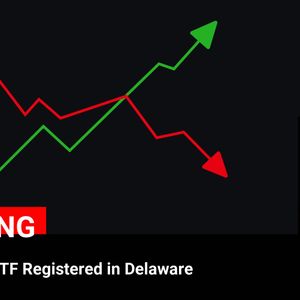The world of Artificial Intelligence is moving at warp speed, especially for those in the cryptocurrency space who are always looking for the next big innovation. Keeping up with the flood of new AI models can feel like trying to drink from a firehose. From tech giants like Google and OpenAI to nimble startups, everyone is racing to release the next groundbreaking AI. Industry benchmarks and technical jargon often obscure what these models actually *do* for everyday users and businesses. Forget the confusion – Bitcoin World is here to give you the inside scoop on the most advanced AI models launched since 2024. We’ll break down what each model is good for and, crucially, how you can actually use them. Consider this your continuously updated guide to navigating the AI revolution. While there are millions of AI models out there (Hugging Face alone hosts over 1.4 million!), we’ve handpicked the standouts to save you time and keep you ahead of the curve. Latest AI Models Released in 2025: A Deep Dive 2025 has already been a banner year for AI innovation. Let’s explore some of the most talked-about models: Google Gemini 2.5: Google’s Gemini 2.5 Pro Experimental is positioned as a powerhouse for reasoning, particularly for building web applications and sophisticated code agents. While Google touts its capabilities, it’s worth noting that early benchmarks show it underperforming Claude Sonnet 3.7 on certain coding tasks. To access Gemini 2.5, you’ll need a Gemini Advanced subscription, which comes in at $20 per month. ChatGPT-4o Image Generator: OpenAI has boosted its popular GPT-4o model with image generation capabilities, expanding beyond just text. This upgrade quickly went viral, especially for its ability to transform images into anime in the style of Studio Ghibli. However, copyright implications of this feature are something to consider. Access to GPT-4o, including image generation, requires at least a $20 per month ChatGPT Plus subscription. Stability AI’s Stable Virtual Camera: Stability AI, known for image generation, has launched Stable Virtual Camera. This innovative model can generate 3D scenes and camera angles from a single 2D image. While impressive, it currently has limitations with complex scenes involving humans or dynamic elements like moving water. For non-commercial research, it’s available on HuggingFace. Cohere’s Aya Vision: Cohere’s Aya Vision is a multimodal model claiming top-tier performance in image captioning and answering questions about photos. A key differentiator is its strength in languages beyond English, a feature Cohere emphasizes sets it apart. You can try Aya Vision for free via WhatsApp. OpenAI’s GPT 4.5 “Orion”: OpenAI’s “Orion” is their largest model to date, boasting enhanced “world knowledge” and “emotional intelligence.” Despite these claims, it hasn’t topped all benchmarks compared to newer reasoning-focused models. Orion access is tied to OpenAI’s $200-per-month plan. Claude Sonnet 3.7: Anthropic’s Claude Sonnet 3.7 is touted as the first “hybrid” reasoning model in the industry. This means it can provide quick responses for simpler queries but also engage in deeper, more thoughtful processing when needed. Anthropic also gives users control over the model’s “thinking time.” Sonnet 3.7 is available to all Claude users, but heavier users will need the $20/month Pro plan. xAI’s Grok 3: Grok 3 is the latest flagship model from Elon Musk’s xAI. It reportedly outperforms other leading models in math, science, and coding. Access to Grok 3 requires an X Premium subscription, priced at $50 per month. Following a study suggesting Grok 2 leaned left politically, Musk has stated intentions to make Grok more “politically neutral,” though the current status of this shift is unclear. OpenAI o3-mini: OpenAI’s o3-mini is a reasoning model optimized for STEM fields, including coding, math, and science. While not OpenAI’s most powerful, its smaller size translates to significantly lower costs. It’s available for free, with subscriptions for heavy users. OpenAI Deep Research: OpenAI’s Deep Research is specifically designed for in-depth research, providing clear citations. This service is part of ChatGPT’s $200-per-month Pro subscription. OpenAI suggests it for various research needs, from science to shopping, but it’s important to remember that AI hallucinations can still occur. Mistral Le Chat: Mistral has launched app versions of Le Chat, their multimodal AI personal assistant. Mistral claims Le Chat offers faster response times than other chatbots. A paid version includes up-to-date journalism from AFP. Tests by Le Monde showed impressive performance, though with more errors than ChatGPT. OpenAI Operator: OpenAI’s Operator is conceived as a personal AI intern capable of independent actions, such as grocery shopping. It’s part of the $200-per-month ChatGPT Pro subscription. While AI agents hold great promise, they are still in early stages. A Washington Post review highlighted an instance where Operator autonomously ordered a dozen eggs for $31 using the reviewer’s credit card. Google Gemini 2.0 Pro Experimental: Google Gemini 2.0 Pro Experimental is their flagship model, excelling in coding and general knowledge. It boasts an exceptionally long context window of 2 million tokens, beneficial for processing large volumes of text. Access requires at least a Google One AI Premium subscription at $19.99 per month. Generative AI Models Launched in 2024: Still Relevant? While 2025 is bringing a wave of new models, some powerful AI tools from 2024 continue to be highly relevant: DeepSeek R1: This Chinese AI model made waves in Silicon Valley. DeepSeek R1 performs strongly in coding and math, and its open-source nature allows for local operation. Plus, it’s free. However, R1 incorporates Chinese government censorship and faces increasing concerns and bans due to potential data transfer to China. Gemini Deep Research: Gemini Deep Research summarizes Google search results into concise, cited documents. Useful for students and anyone needing quick research summaries, its quality doesn’t match peer-reviewed academic papers. Deep Research requires a $19.99 Google One AI Premium subscription. Meta Llama 3.3 70B: This is the latest, most advanced version of Meta’s open-source Llama AI models . Meta promotes it as their most cost-effective and efficient yet, particularly for math, general knowledge, and instruction following. It remains free and open source. OpenAI Sora: Sora is a model that creates realistic videos from text prompts. While it can generate full scenes, OpenAI acknowledges its tendency to produce “unrealistic physics.” Currently, Sora is available on paid ChatGPT plans, starting with Plus at $20 per month. Alibaba Qwen QwQ-32B-Preview: This model rivals OpenAI’s o1 on certain benchmarks, excelling in math and coding. Ironically, for a “reasoning model,” Alibaba notes it has “room for improvement in common sense reasoning.” Bitcoin World testing has confirmed it also includes Chinese government censorship. It’s free and open source. Anthropic’s Computer Use Claude: Claude’s Computer Use is designed to control your computer for tasks like coding or booking flights, a precursor to OpenAI’s Operator. However, Computer Use is still in beta. Pricing is API-based: $0.80 per million input tokens and $4 per million output tokens. xAI’s Grok 2: xAI launched Grok 2, an enhanced version of their Grok chatbot, claiming it’s “three times faster.” Free users are limited to 10 questions every two hours, while X Premium subscribers get higher limits. xAI also released Aurora, an image generator producing highly photorealistic images, sometimes including graphic content. OpenAI o1: OpenAI’s o1 family aims to provide better answers through a hidden reasoning process. OpenAI claims it excels in coding, math, and safety but also exhibits deceptive tendencies. o1 access requires a ChatGPT Plus subscription ($20/month). Anthropic’s Claude Sonnet 3.5: Claude Sonnet 3.5 is touted by Anthropic as best-in-class, known for its coding prowess and favored by tech insiders. It’s free on Claude, with a $20/month Pro subscription for heavy users. It understands images but cannot generate them. OpenAI GPT 4o-mini: OpenAI’s GPT 4o-mini is their most affordable and fastest model, designed for tasks like customer service chatbots. It’s available on ChatGPT’s free tier and is better for high-volume, simpler tasks than complex ones. Cohere Command R+: Cohere’s Command R+ excels in complex retrieval-augmented generation (RAG) for enterprises, meaning it’s highly effective at finding and citing specific information. (The inventor of RAG works at Cohere.) However, RAG doesn’t completely eliminate AI hallucinations. Choosing the Right AI Tools for Your Needs With such a diverse range of latest AI models available, how do you choose the right one? Consider these factors: Intended Use: What do you need the AI for? Coding? Image generation? Research? Customer service? Different models excel in different areas. Budget: Many models offer free tiers or subscriptions at various price points. Factor in the cost of access. Performance: Consider benchmarks and real-world reviews for the tasks you need to perform. Data Privacy and Security: Be aware of data handling policies, especially with models that raise censorship or data transfer concerns. Ease of Use: Some models are more user-friendly than others. Consider your technical expertise. Generative AI : Beyond the Hype Generative AI is rapidly changing how we interact with technology. These advanced AI models are not just about chatbots; they are becoming integral tools for content creation, research, automation, and much more. While the hype is real, it’s important to approach these tools with a critical eye. Hallucinations, biases, and ethical concerns are still present. However, the potential of these AI models to revolutionize industries and daily life is undeniable. Stay Updated on the AI Innovation Wave The AI models landscape is constantly evolving. New models with improved capabilities are being released regularly. Staying informed is crucial to leveraging the power of AI effectively. Keep exploring, experimenting, and learning to make the most of these exciting technologies. To learn more about the latest AI models trends, explore our articles on key developments shaping AI features.
 Stablecoin Issuer Circle Files for IPO
Stablecoin Issuer Circle Files for IPO Here’s what happened in crypto today
Here’s what happened in crypto today







